July 16, 2019
Partial Lunar Eclipse Viewing Event
Report by: Mike Meynell
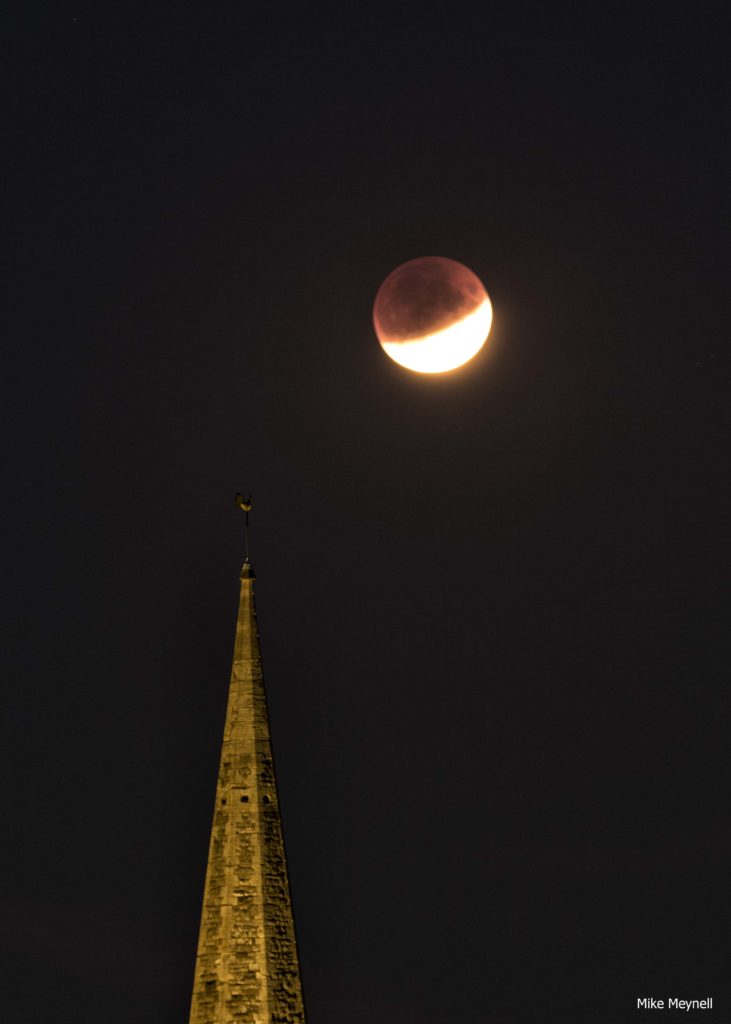
The weather in the UK is notoriously difficult to predict. However, amateur astronomers can normally predict, years in advance, when we can expect poor weather and cloudy skies. Those conditions, almost without fail, occur on the day of major astronomical events!
Fortunately, the evening of Tuesday 16th July 2019 bucked the trend. We were treated to beautiful clear skies and warm weather, enabling us to have perfect views of the partial lunar eclipse.
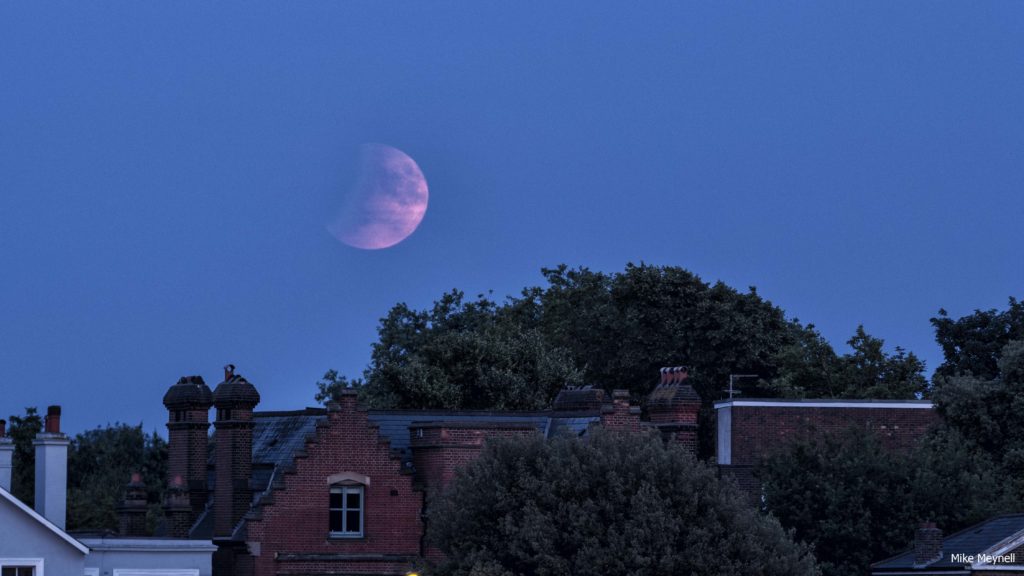
A partial lunar eclipse occurs when the Earth moves between the Sun and the Full Moon, but, as they are not precisely aligned, only part of the Moon’s visible surface moves into the dark part of the Earth’s shadow (the umbra). The remainder of the Moon is covered by the outer part of the Earth’s shadow (the penumbra). On this occasion, about 65% of the Moon would be covered by the umbral shadow at maximum eclipse.
Lots of Flamsteed volunteers were in attendance, and they were certainly needed as we had dozens of visitors over the course of the evening. Some visitors had seen the event publicised on social media feeds, whilst others were just passers-by or local residents intrigued by the battery of telescopes and cameras being pointed towards the south-east horizon.
The Moon rose at 9.05pm, already in partial eclipse. We caught our first glimpse of the Moon just edging above the houses and trees at 9.20pm, and it was already a beautiful sight. Whilst answering a barrage of questions from attendees, I tried to keep focused on taking lots of images. My set-up was pretty simple… a cropped-sensor Canon DSLR attached to a short focal length telescope (250mm focal length, f/4.9). This would give a small amount of detail on the lunar surface, but had the advantage of giving a wide enough field of view to include some foreground objects. Our observing sight on Blackheath was chosen so that the Moon would rise over All Saints Church, with the maximum eclipse occurring when the Moon was above the main spire.
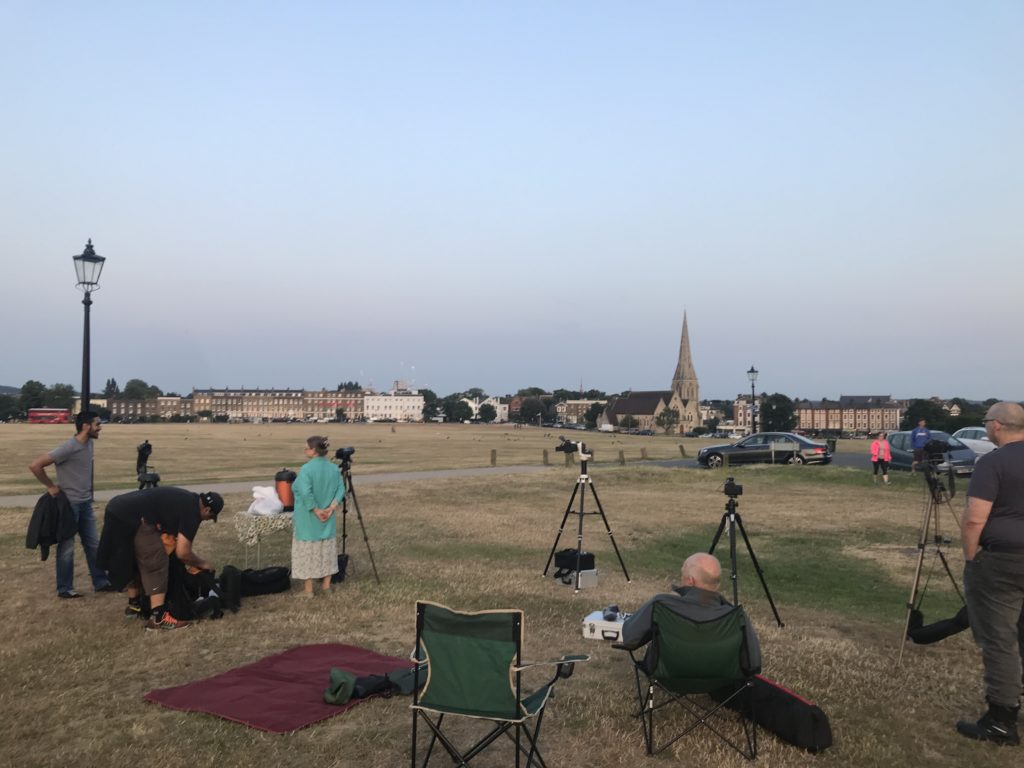
As the Moon rose, the area covered by the penumbral shadow lost it’s red-orange colour, caused by the Moon being close to the horizon. The area of umbral shadow thus became more pronounced, with the deep-red colour that we associate with lunar eclipses. This effect was especially visible at maximum eclipse, particularly photographically if you exposed for the umbral shadow (thus overexposing the penumbral shadow). It’s a tricky balancing act, but I found that a 4 or 5 second exposure at low ISO settings gave quite a pleasing effect.
Once we were past maximum eclipse, most people dispersed. However, Tej had decided to carry on with an informal observing session and was treating our remaining visitors to views of Saturn and Jupiter through his SCT telescope. Well done Tej, I know that many people appreciated your efforts.
Thanks to everyone who attended, and special thanks to our wonderful Flamsteed volunteers, without whom these events would not be possible.

Setting up on Blackheath at the start of the viewing session 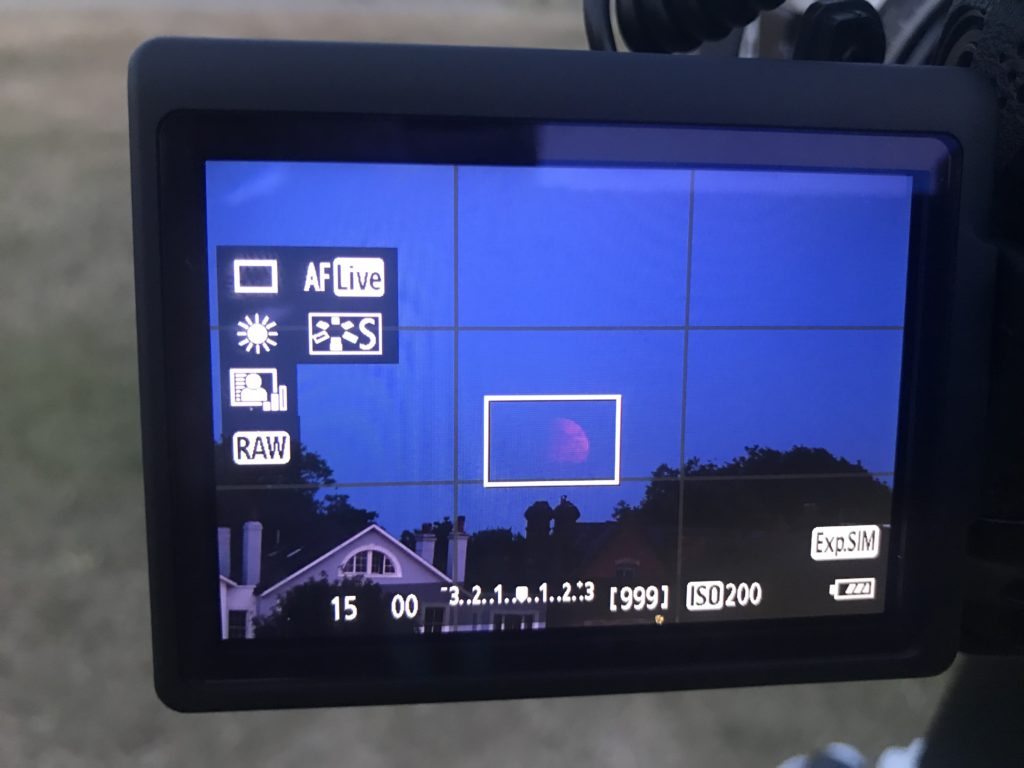
First view of the Moon from the live-view on the back of a camera 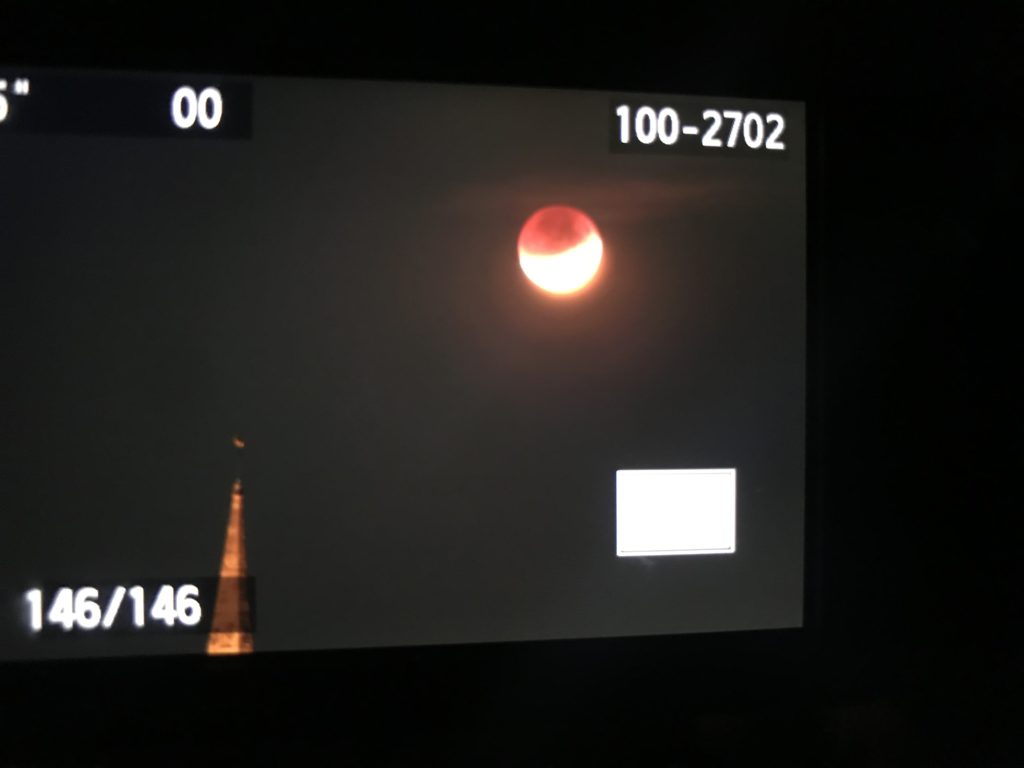
Moon at maximum eclipse from live-view on back of a camera 
First Sight of Partially Eclipsed Moon 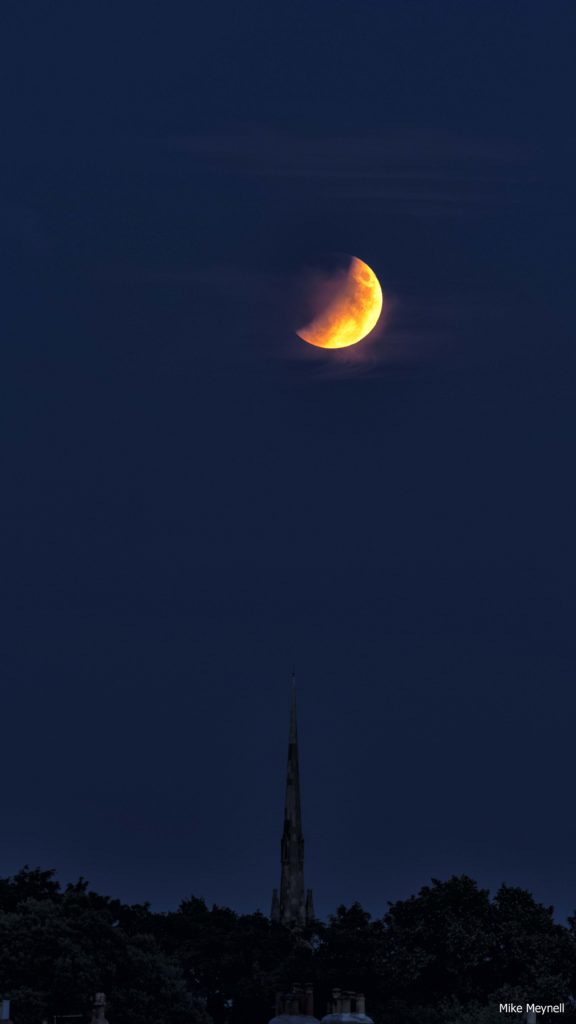
Partially Eclipsed Moon through Clouds 
Moon at Maximum Partial Eclipse above All Saints Church 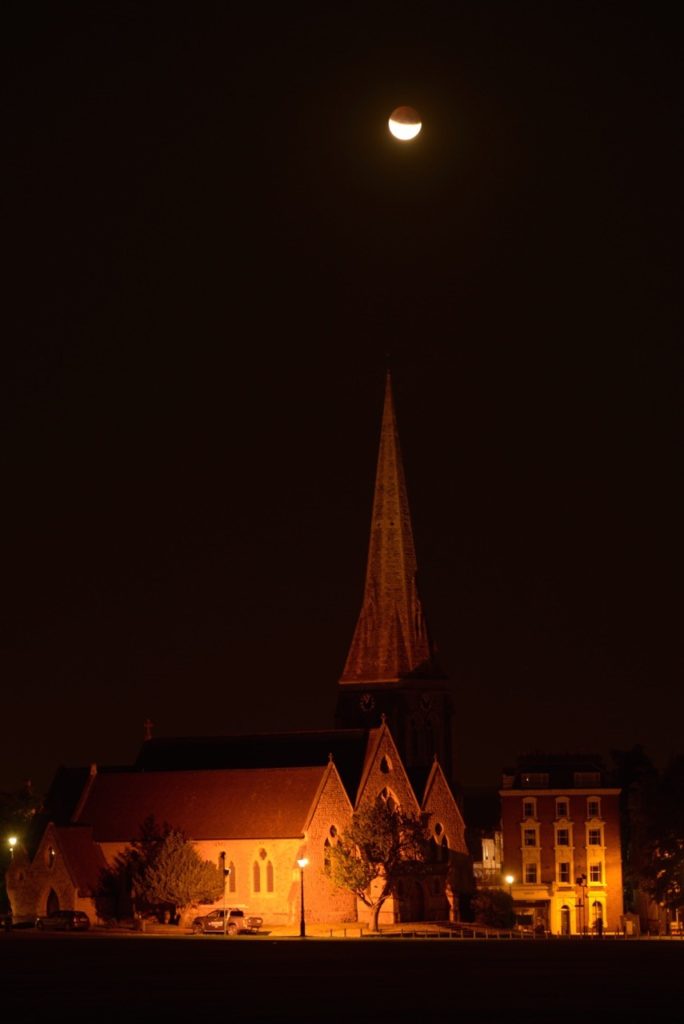
Partial Lunar Eclipse 02 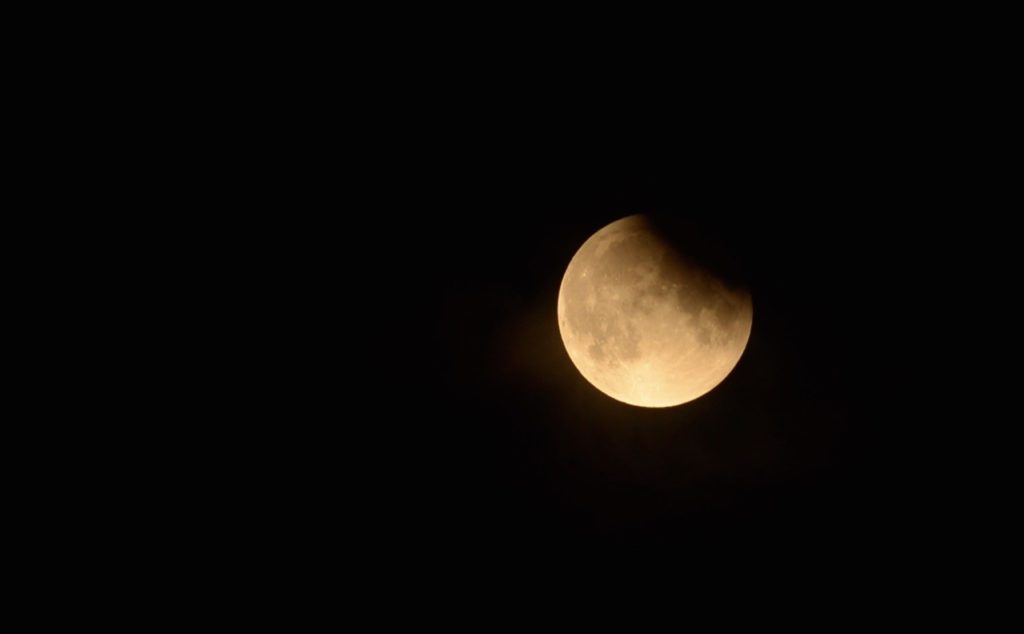
Partial Lunar Eclipse 03 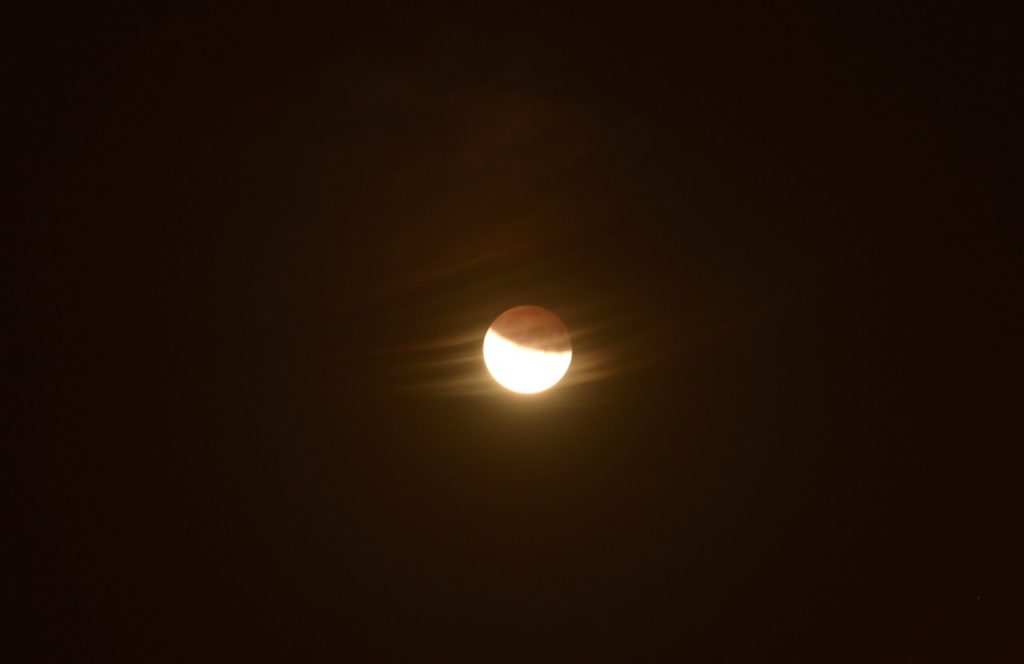
Partial Lunar Eclipse 04 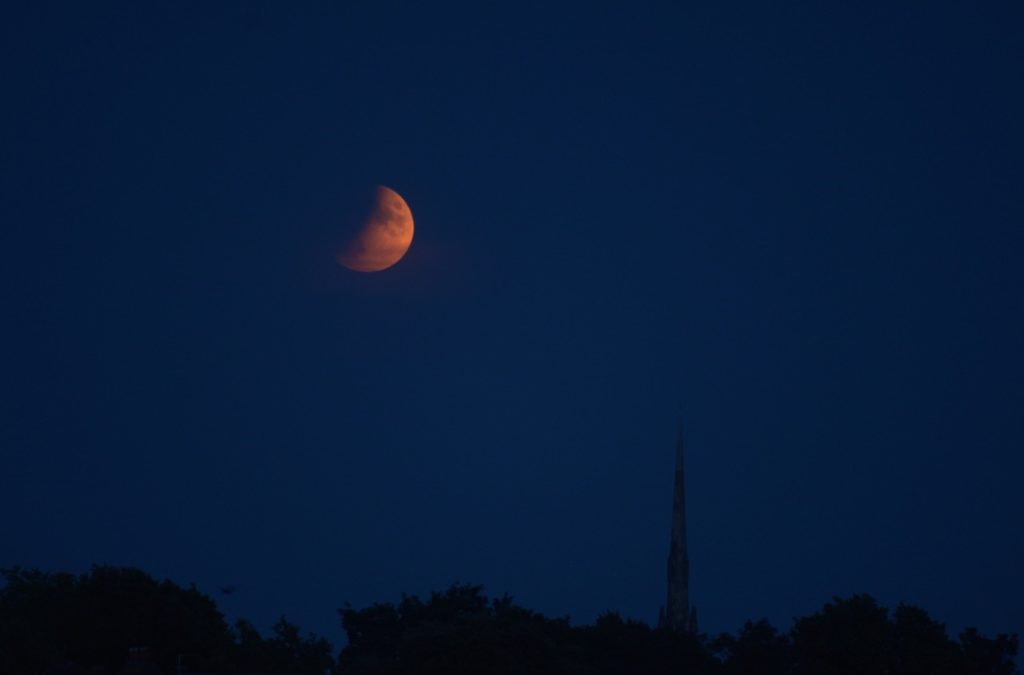
Partial Lunar Eclipse 01
Posted under: Blackheath, Meeting Report, Practical Astronomy Group

You must be logged in to post a comment.